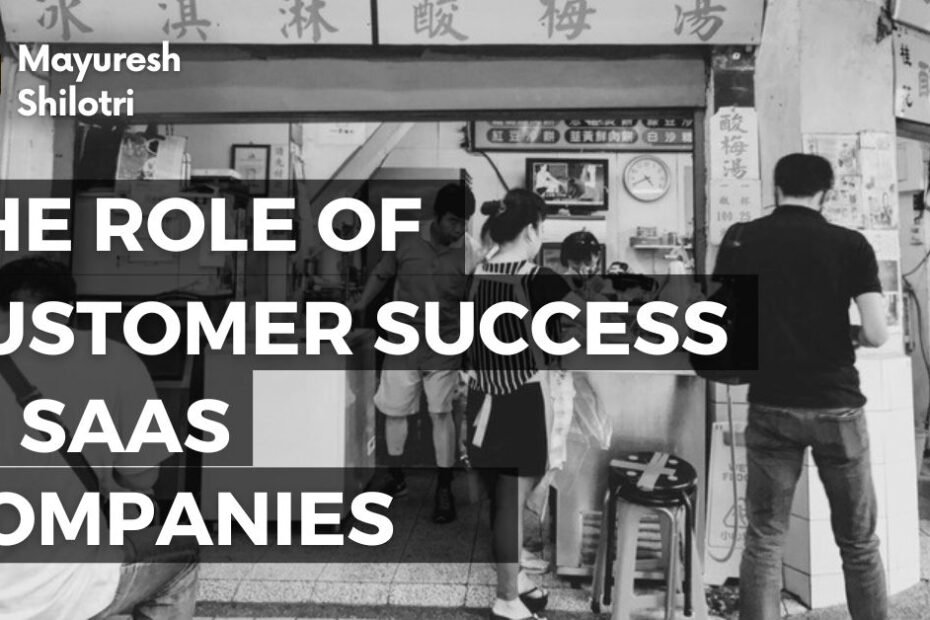The role of Customer Success in Software as a Service (SaaS) companies has evolved significantly over the past decade. Traditionally, customer support was viewed as a reactive function, primarily focused on addressing issues as they arose. However, the advent of subscription-based models has necessitated a shift towards a more proactive approach.
Customer Success is now recognized as a strategic function that aims to ensure customers derive maximum value from the product, thereby fostering long-term relationships and loyalty. This role encompasses a range of activities, from onboarding new users to providing ongoing support and guidance, all aimed at enhancing the overall customer experience. Customer Success Managers (CSMs) serve as the primary point of contact for customers, acting as advocates for their needs within the organization.
They are tasked with understanding customer goals and aligning them with the capabilities of the software. This requires a deep understanding of both the product and the customer’s business context. CSMs often engage in regular check-ins, conduct health checks, and analyze usage data to identify potential issues before they escalate.
By doing so, they not only help customers achieve their objectives but also contribute to the company’s bottom line by reducing churn and increasing upsell opportunities.
Key Takeaways
- Customer Success in SaaS companies involves ensuring that customers achieve their desired outcomes while using the product.
- Customer Success is crucial in SaaS companies as it leads to higher customer retention, increased customer satisfaction, and ultimately, company growth.
- Key responsibilities of Customer Success teams include onboarding new customers, providing ongoing support, and identifying opportunities for upselling or cross-selling.
- Customer Success directly impacts customer retention and growth by fostering strong relationships, reducing churn, and driving expansion revenue.
- Best practices for implementing Customer Success in SaaS companies include creating a customer-centric culture, leveraging technology for efficiency, and continuously gathering customer feedback for improvement.
The Importance of Customer Success in SaaS Companies
Enhancing Customer Experience
A strong Customer Success strategy can differentiate a company from its competitors by creating a more personalized and engaging experience for users. When customers feel supported and valued, they are more likely to remain loyal, leading to higher retention rates and increased lifetime value.Driving Revenue Growth
Moreover, Customer Success plays a critical role in driving revenue growth. Satisfied customers are not only less likely to churn but are also more inclined to expand their usage of the product or recommend it to others.The Power of Word-of-Mouth Marketing
This word-of-mouth marketing can be invaluable, particularly in the SaaS space where trust and credibility are essential for attracting new clients. By investing in Customer Success initiatives, companies can create a virtuous cycle where happy customers lead to new business opportunities, further reinforcing the importance of this function.Key Responsibilities of Customer Success Teams

Customer Success teams have a diverse set of responsibilities that are crucial for ensuring customer satisfaction and engagement. One of their primary duties is onboarding new customers effectively. This process involves guiding users through the initial setup and configuration of the software, ensuring they understand its features and functionalities.
A well-executed onboarding experience can significantly impact a customer’s perception of the product and their likelihood of continued use. In addition to onboarding, CSMs are responsible for conducting regular check-ins with customers to assess their satisfaction levels and gather feedback. These interactions provide valuable insights into how customers are using the product and any challenges they may be facing.
By proactively addressing these issues, CSMs can help customers overcome obstacles and maximize their use of the software. Furthermore, Customer Success teams often play a role in identifying upsell opportunities by understanding customer needs and suggesting additional features or services that could enhance their experience.
How Customer Success Impacts Customer Retention and Growth
The relationship between Customer Success and customer retention is direct and profound. When customers feel supported and see tangible results from using a product, they are less likely to seek alternatives. Research has shown that companies with dedicated Customer Success teams experience lower churn rates compared to those without such initiatives in place.
This is particularly important in the SaaS industry, where recurring revenue models rely heavily on maintaining a stable customer base. Moreover, Customer Success can drive growth through expansion revenue. As CSMs build strong relationships with customers, they gain insights into their evolving needs and challenges.
This knowledge allows them to recommend additional features or services that align with those needs, leading to upsell opportunities. For instance, if a customer is successfully using a basic version of a software tool but expresses interest in advanced analytics capabilities, a CSM can facilitate an upgrade discussion. This proactive approach not only enhances customer satisfaction but also contributes to the company’s overall revenue growth.
Best Practices for Implementing Customer Success in SaaS Companies
Implementing an effective Customer Success strategy requires careful planning and execution. One best practice is to establish clear metrics for success that align with both customer goals and business objectives. These metrics could include customer satisfaction scores, Net Promoter Scores (NPS), churn rates, and expansion revenue figures.
By tracking these indicators, companies can assess the effectiveness of their Customer Success initiatives and make data-driven decisions for improvement. Another critical aspect is investing in training and development for Customer Success teams. CSMs should possess not only product knowledge but also strong interpersonal skills to build rapport with customers.
Regular training sessions can help them stay updated on product developments and industry trends while also honing their communication skills. Additionally, fostering a culture of collaboration between Customer Success teams and other departments—such as sales, marketing, and product development—can lead to more cohesive strategies that benefit both customers and the organization.
Measuring the Success of Customer Success Efforts

Measuring the success of Customer Success efforts is essential for understanding their impact on both customer satisfaction and business performance. One common approach is to utilize customer health scores, which aggregate various metrics such as product usage frequency, support ticket volume, and customer feedback into a single score that indicates overall satisfaction. By regularly monitoring these scores, companies can identify at-risk customers who may require additional support or intervention.
Another important metric is Customer Lifetime Value (CLV), which estimates the total revenue a company can expect from a single customer over the duration of their relationship. By analyzing CLV alongside churn rates, organizations can gain insights into the effectiveness of their Customer Success strategies. If CLV is increasing while churn rates decrease, it indicates that Customer Success efforts are resonating with customers and driving long-term loyalty.
The Relationship Between Customer Success and Product Development
The interplay between Customer Success and product development is crucial for creating a product that meets customer needs effectively. CSMs often serve as the voice of the customer within the organization, providing valuable feedback on user experiences and feature requests. This information can inform product development teams about areas for improvement or new features that could enhance user satisfaction.
Furthermore, involving Customer Success teams early in the product development process can lead to better outcomes. By understanding customer pain points and desired functionalities from the outset, product teams can prioritize features that will deliver maximum value to users. This collaborative approach not only improves the product but also strengthens the relationship between customers and the company by demonstrating a commitment to addressing their needs.
The Future of Customer Success in SaaS Companies
As SaaS companies continue to evolve in an increasingly competitive landscape, the role of Customer Success will likely become even more prominent. With advancements in technology such as artificial intelligence and machine learning, organizations will have access to more sophisticated tools for analyzing customer behavior and predicting churn risks. These insights will enable CSMs to take proactive measures to enhance customer experiences before issues arise.
Moreover, as businesses increasingly recognize the importance of customer-centric strategies, there will be a greater emphasis on integrating Customer Success across all departments within an organization. This holistic approach will ensure that every team—from sales to marketing to product development—understands their role in contributing to customer success. As a result, companies that prioritize this integration will be better positioned to foster long-term relationships with their customers and drive sustainable growth in an ever-changing market landscape.



